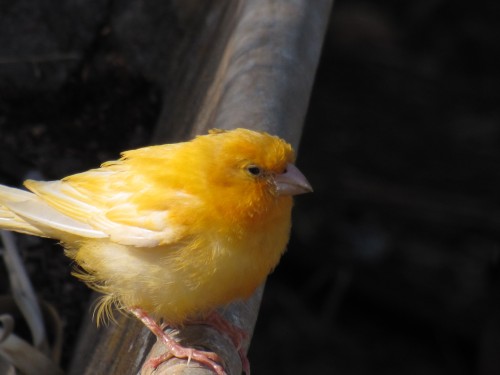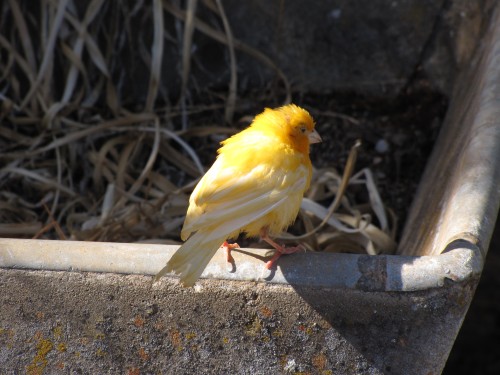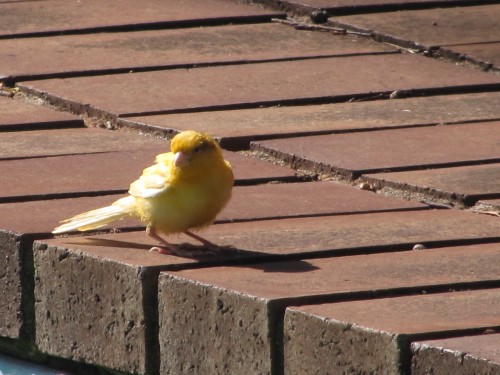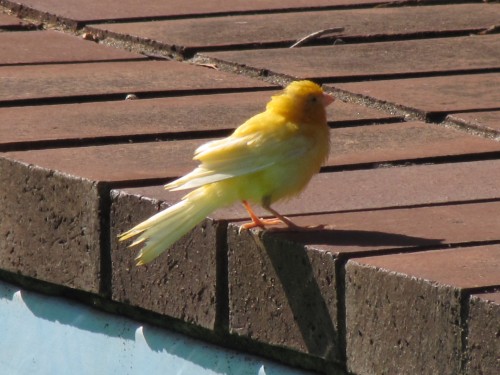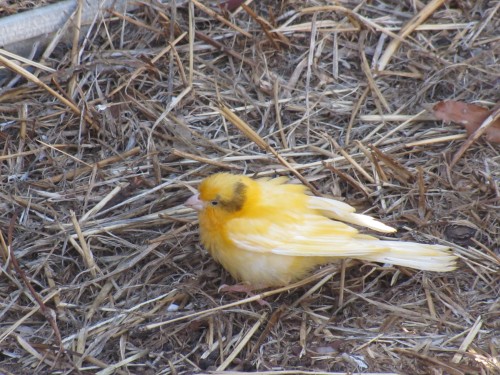Hello little Canary
A few weeks ago my attention was attracted to a strange looking bird on the rainwater tank. I raced inside to get my camera and was delighted to find that it had flown closer. I immediately identified it as a canary. It was now hopping around on the paving bricks around the swimming pool. I stealthily took some photos, zooming in to get closer to my subject.
When I carefully opened the safety gate into the pool area it stayed in place. It was obviously very used to people, or it was just naturally quite tame. I was able to approach slowly to within two metres, getting some good photos along the way. I actually tried to catch it seeing that it was not at all scared of me. On my last attempt it flew off over the fence and into the nearby trees. I haven’t seen it since. I presume it has either been taken by a bird of prey – we have many hawks and kites around here – or it found its way home next door. Both of our next-door neighbours have large aviaries and we often hear their canaries singing.
Canaries are not native to Australia. They are, however, a commonly kept cage bird. I remember having a canary when I was quite young. In fact, I think that it was actually my mother’s pet bird. She was convinced that it was a male bird – until it started laying eggs!
Many people are of the mistaken idea that the Canary Islands are named after the birds. These islands in the Atlantic Ocean, are a part of Spainish territory off the coast of Morocco. The bird known as a canary does exist on the islands, but they are named after the islands. The name Canary Islands literally means ‘the island of the dogs‘ and was named by the early Roman explorers. (See the Wikipedia article for more information.)
Further reading:
- Who has lost a canary? Another sighting of a canary in our garden some time ago.
